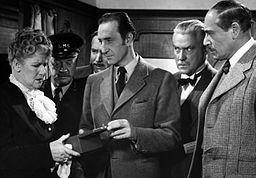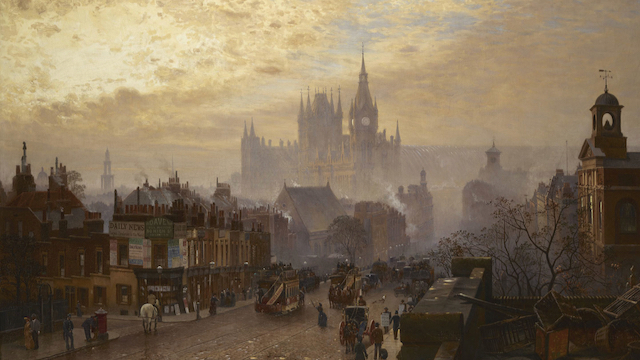 Sherlock Holmes and the Eisendorf Enigma
Sherlock Holmes and the Eisendorf Enigma
by Larry Millett
University of Minnesota Press (February 2017)
240 p. ISBN 9781517900861
Publisher’s Summary
Dogged by depression, doubt, and—as a trip to the Mayo Clinic has revealed—emphysema, 66-year-old Sherlock Holmes is preparing to return to England when he receives a shock: a note slipped under his hotel room door, from a vicious murderer he’d nearly captured in Munich in 1892. The murderer, known as the Monster of Munich, announces that he has relocated to Eisendorf, a tiny village near the Mayo Clinic in Rochester, Minnesota.
If Holmes is not what he once was, the same can be said for Eisendorf: once a thriving community founded by German idealists but now a dying town with only forty residents—two of whom have, indeed, died recently under highly mysterious circumstances. Replete with all the gothic richness of Larry Millett’s earlier Holmes novels, Sherlock Holmes and the Eisendorf Enigma links events in 1892 Germany with those in small-town Minnesota in 1920 in a double mystery that tests the aging detective’s mettle—and the reader’s nerve—as never before.
Guided by Eisendorf’s peculiar archivist and taunted by the Monster, Holmes finds himself drawn into the town’s dark history of violence and secrecy, and into the strange tunnels that underscore the old flour mill where answers, and grievous danger, lie in wait. No longer the cool, flawless logician of times past, Holmes must nonetheless match wits with a fiendish opponent who taunts him right up to a final, explosive confrontation.
General Review
Taking place during the Retirement Years, even past World War I, Eisendorf Enigma is a fun, fast-paced mystery. I was very excited when NetGalley sent me an ARC of Millett’s latest Sherlock Holmes novel- growing up, his novels were some of the first pastiches I encountered- and I’m deeply grateful to them for the opportunity to read this book in advance and comment on it.
The story begins quickly, almost abruptly, with the reader being introduced to several things at once, including Holmes’ illness and his history in Munich, before we find ourselves in Eisendorf itself, meeting our cast of suspects. Eisendorf is a miniscule German village in Minnesota, and it’s layered in secrets. It is fascinating to see Holmes attempt to tease out information from people when literally everyone he meets lies to him or misdirects him, and the only records he can consult are written by the same people who are lying to him. Although the book starts very quickly, it soon adjusts to a slower, more measured pace that absolutely suits the very Southern Gothic atmosphere of this book. We spend a great deal of time meeting the inhabitants of the town, few as they are, and learning the history and the founding of Eisendorf. In between these moments, we flash back to 1892 Munich, when Holmes first encountered the serial killer known as the Monster. The two stories are woven together well, each contributing new insights to the other.
Millett has always been phenomenal at writing eccentrics (many familiar with the series will well remember Shadwell Rafferty, who dominated Millett’s later books; while Rafferty appears in this book, he is not a main character), and it shines through here. Eisendorf is full of strange people. There’s the archivist, who notes down every detail of the town and whom Holmes cannot unravel; the young woman with a childish spirit who wears angel wings and claims to know secrets; the recluse who threatens Holmes whenever they meet; the outcast whose actions during World War I endangered much of the town; the town leader and his wife, who make for an odd pair; and the widow, that Holmes finds captivating. The secondary characters are delightful, and it is enjoyable trying to sort out which among them may have a motive and committed the crimes Holmes is investigating.
Millett’s descriptions are lush and rich, and anyone who likes to craft a good visual in their head will appreciate his attention to detail with the setting. Minnesota is a beautiful place, and the author’s descriptions create a written picture that will match any photos you pull up on the Internet or in a book.
The first two-thirds of the book are from a third-person perspective, following Holmes, which could be disconcerting for readers used to Watson’s first-person perspective. Thankfully, in the last third of the book, we return to what we are used to. The first part of the book is still well done, however, if occasionally too willing to repeat internal thoughts of Holmes’ that don’t need to be stated with such frequency.
It’s a charming, quick book, and I enjoyed it immensely. I hope Millett will consider writing more works in this timeline, one rarely explored by pastiche writers. It would be lovely to have a set of books that focus on the cases of Holmes and Watson, well past retirement and post-World War I.
What About Our Watson?
For a while, I feared I would have little to report on the Watson front. The first two-thirds of the book feature Holmes by himself, without any of his usual allies or friends, in Eisendorf. I was fully prepared to write about the occasional affectionate thoughts that Holmes has for Watson, and to note that his brief appearance at the beginning is pleasant, if unsatisfying for the dedicated Watsonian.
Thankfully, however, Watson makes a heroic entrance towards the end, and while he doesn’t get to contribute much in the solving of the mystery, his personality comes through in spades. Watson rushes off to America, leaving his irate second wife behind (the second Mrs. Watson is not well liked by Holmes, or the author it would seem) in order to get to Holmes’ side. He is shown to be an excellent doctor, whose medical opinion Holmes trusts above all others, and is quick to follow through on Holmes’ strange requests. His sarcastic humor comes out at the most unexpected times, much to my amusement.
While there isn’t as much Watson content as I would like, when Watson is there, he is very recognizably Watson.
You Might Like This Book If You Like:
Minnesota; small town histories; Southern Gothic mysteries; ruminations on age and illness
 Something a little different today: rather than a Canonical happening, an event in the Sherlockian world 71 years ago today.
Something a little different today: rather than a Canonical happening, an event in the Sherlockian world 71 years ago today.
 Scott Monty, JHWS “Woolley”, and Burt Wolder, JHWS “Taylor”, have launched a brand-new podcast called
Scott Monty, JHWS “Woolley”, and Burt Wolder, JHWS “Taylor”, have launched a brand-new podcast called 
 Sherlock Holmes and the Eisendorf Enigma
Sherlock Holmes and the Eisendorf Enigma